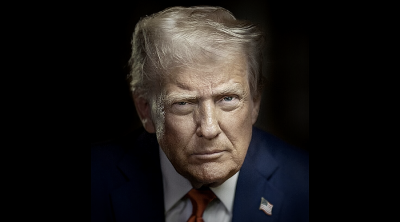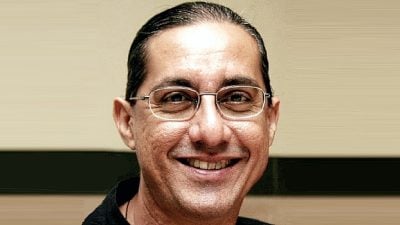
When President Donald Trump greenlit coordinated strikes—almost certainly with Israeli backing—on Iran’s heavily fortified nuclear sites at Fordow, Natanz, and Isfahan in mid-June 2025, the world was forced into a new phase of geopolitical chaos.
But beyond the immediate spectacle of missiles and mushroom clouds, the deeper damage lies elsewhere—in the realm of science, human safety, and global norms.
The use of GBU-57 “bunker buster” bombs, designed to penetrate as deep as 80 meters into hardened mountain bunkers, has rendered these nuclear sites not only militarily unusable but also scientifically unverifiable.
Whatever Trump’s short-term strategic calculus, the long-term fallout will be felt in laboratories, water tables, and diplomatic chambers around the world.
Unseen fallout: The scientific and human toll
Bombing nuclear facilities is not like toppling a weapons depot or an airstrip. These were not just military targets—they were also research centers, brimming with scientists, technicians, and engineers.
Unlike Japan’s Fukushima nuclear disaster, which stemmed from a tsunami, Iran’s nuclear wreckage was human-made and intentional.
Now, international inspectors from the International Atomic Energy Agency (IAEA) face a landscape they are ill-equipped to evaluate.
Radiation hotspots, collapsed centrifuge chambers, ruptured uranium containment units—these are no longer theoretical risks but real, unpredictable threats.
Without intact facilities, any benchmark of prior activity is gone.
Inspectors won’t just be checking paperwork—they’ll be navigating unstable debris, with Geiger counters malfunctioning and protective suits offering scant defense against cumulative exposure.
A norm-shattering precedent
Legally and ethically, the attacks mark a dangerous departure from decades of arms control and verification norms.
Iran remains a signatory to the Nuclear Non-Proliferation Treaty (NPT). Regardless of its strained relationship with the West or suspicions about weaponization, Iran’s nuclear program—under IAEA scrutiny, however partial—had not reached the threshold that justifies unilateral bombing.
This operation obliterates the foundation of peaceful nuclear oversight.
Verification relies on access, transparency, and time—not missile strikes. Trump, backed by a national security team now composed of hardliners like Marco Rubio, JD Vance, and Peter Hegseth, has shredded the credibility of the US as a responsible nuclear stakeholder.
It signals to other states: don’t bother complying, because your facilities can still be destroyed on suspicion alone.
Iran’s scientific identity in rubble
The narrative in the West often reduces Iran’s nuclear infrastructure to clandestine weapons ambitions.
But for many Iranians, it represented something more profound—scientific autonomy, national pride, and self-reliance in the face of decades of sanctions and isolation.
The destruction of Natanz or Isfahan is not just physical; it’s psychological.
The bombings will set back Iran’s peaceful nuclear aspirations by a generation.
Laboratories lie in radioactive ruins. Academic exchanges will freeze. International collaboration is already evaporating. And any Iranian student or scientist working on nuclear physics—regardless of intent—will now be treated with suspicion.
This is not disarmament. This is the eradication of a nation’s scientific capacity.
Environmental danger on an unfolding scale
Fordow and Natanz are not remote wastelands; they’re near populated areas.
Iran, unlike Ukraine during the 1986 Chernobyl disaster, may not have the resources or access to launch containment efforts.
Aquifers may be poisoned. Airborne contaminants may have already escaped. The geological shockwaves from bunker-buster explosions could destabilize subterranean water systems and create long-term toxicity zones.
To make matters worse, Iran will not welcome international experts immediately. And who would? No sovereign state would risk exposing bombed-out nuclear rubble—laced with radiation and perhaps hidden explosives—to outside scrutiny while under siege. Yet this very reluctance will be used to frame Iran as evasive and uncooperative, justifying more strikes.
A vicious cycle is now underway.
Diplomacy bombed into silence
The diplomatic consequences are stark. The JCPOA (Joint Comprehensive Plan of Action) is now beyond repair.
Even nations like China, Russia, and Turkey—who may not side with the US—will be forced to reconsider how they approach scientific exchanges with Iran. The era of cautious engagement has collapsed.
Instead, Iran may now pivot further east, forming tighter nuclear and scientific ties with China and Russia. This isn’t containment; it’s consolidation.
The West, by closing the door on inspections and diplomacy, has pushed Tehran deeper into strategic alliances that won’t demand verification—but will accelerate capabilities.
ASEAN’s moment to speak up
As Chair of ASEAN in 2025, Malaysia must do more than express concern. This is the time for principled neutrality, not passive silence.
ASEAN, historically non-aligned and committed to peaceful regionalism, must challenge the idea that bombing nuclear science is an acceptable form of security.
Smaller states considering nuclear energy for peaceful purposes—Vietnam, Indonesia, and Malaysia included—are now watching closely.
If Iran’s research hubs can be flattened without due process, what protections do theirs have?
ASEAN should call for a global commission, independent of NATO or the P5, to assess the damage and guide decontamination.
A multilateral panel led by states like Malaysia, Brazil, South Africa, and Indonesia could demonstrate the moral clarity that the UN Security Council now lacks.
The world has crossed a line
The tragedy of these bombings is not just Iran’s to bear. This is a wound to the world’s scientific order.
It erodes the fragile trust that underpins non-proliferation. It cripples verification by replacing it with vengeance. It swaps transparency for tactical arrogance.
History will not remember this as a victory. It will remember it as the moment when science itself became a target.
A radioactive nightmare now clouds Iran’s skies.

(Dr Phar Kim Beng is Professor of ASEAN Studies, International Islamic University Malaysia, and Cambridge Commonwealth Scholar.)
ADVERTISEMENT
ADVERTISEMENT








































